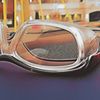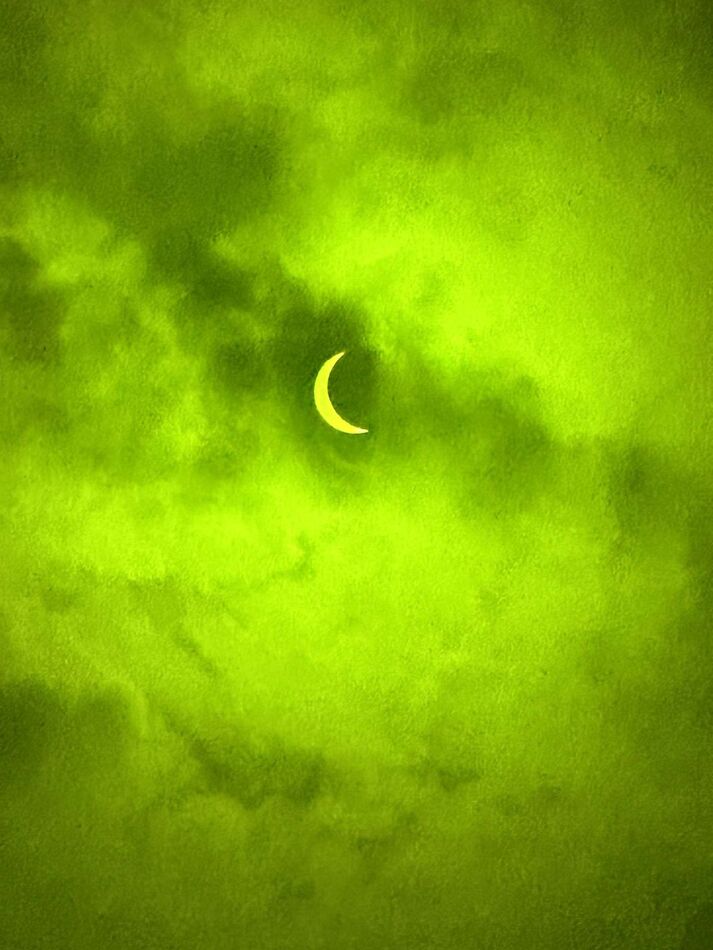The eclipse that wasn't
Apr 11, 2024 07:55:29 #
wingclui44
Loc: CT USA
I live in Westchester NY, We can only have 92% of the eclipse, I didn't use any of my DSLR/ML cameras but my old Panasonic super zoom set at 420mm F.Eq. at 400 ISO; 1/400 sec; F4.0. at the beginning, then changed to 800 ISO; 1/100sec at the end. I used a malar Solar filter, and converted the images to B&W.
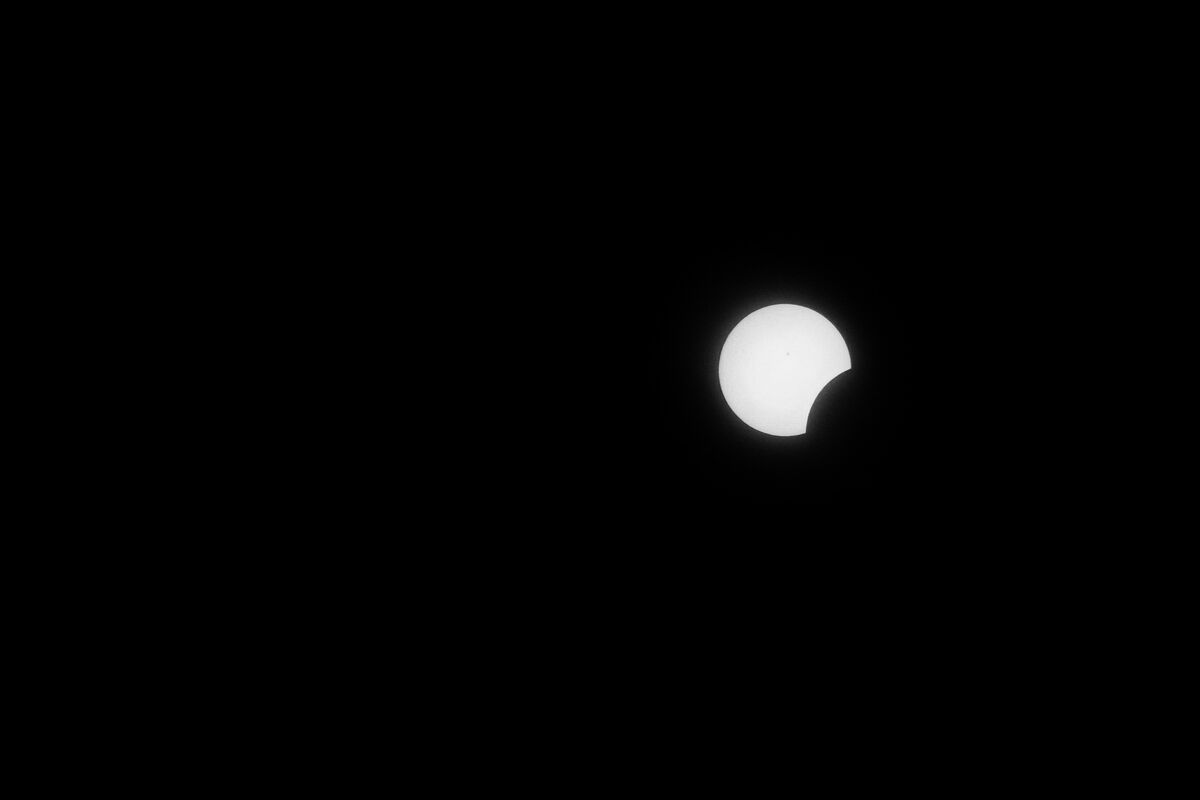
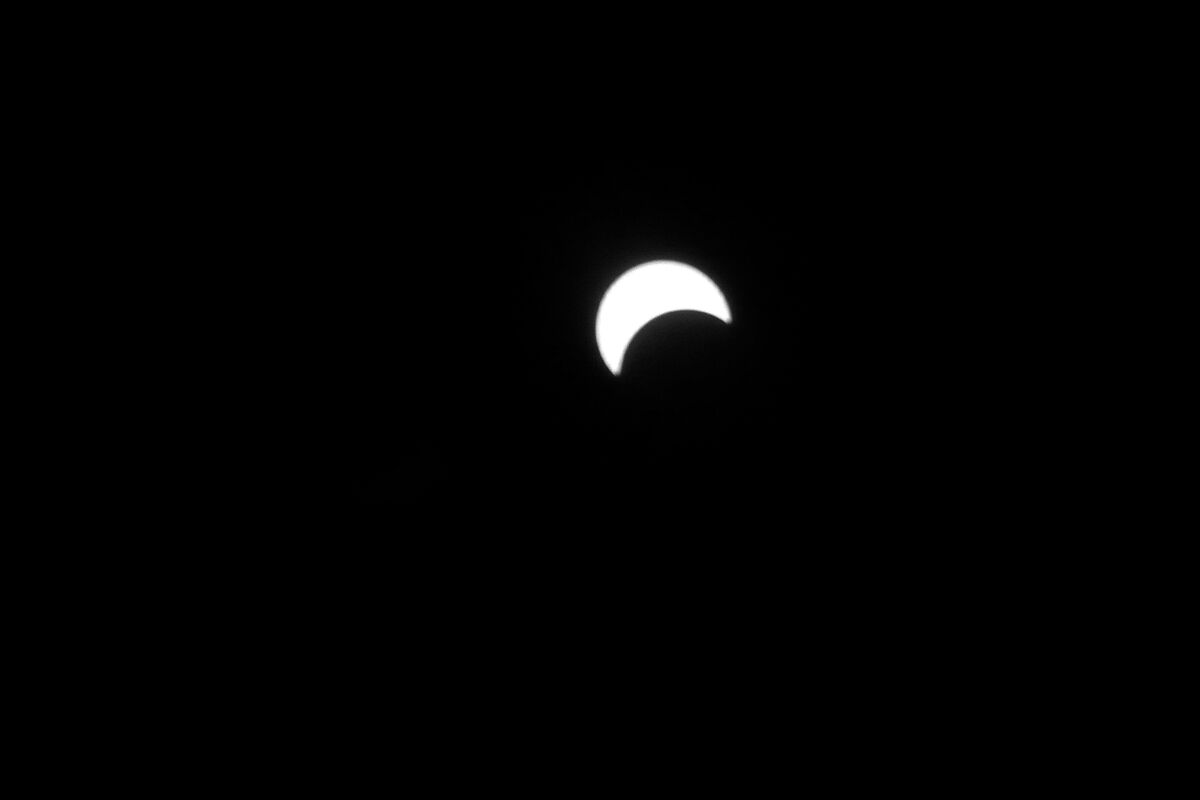
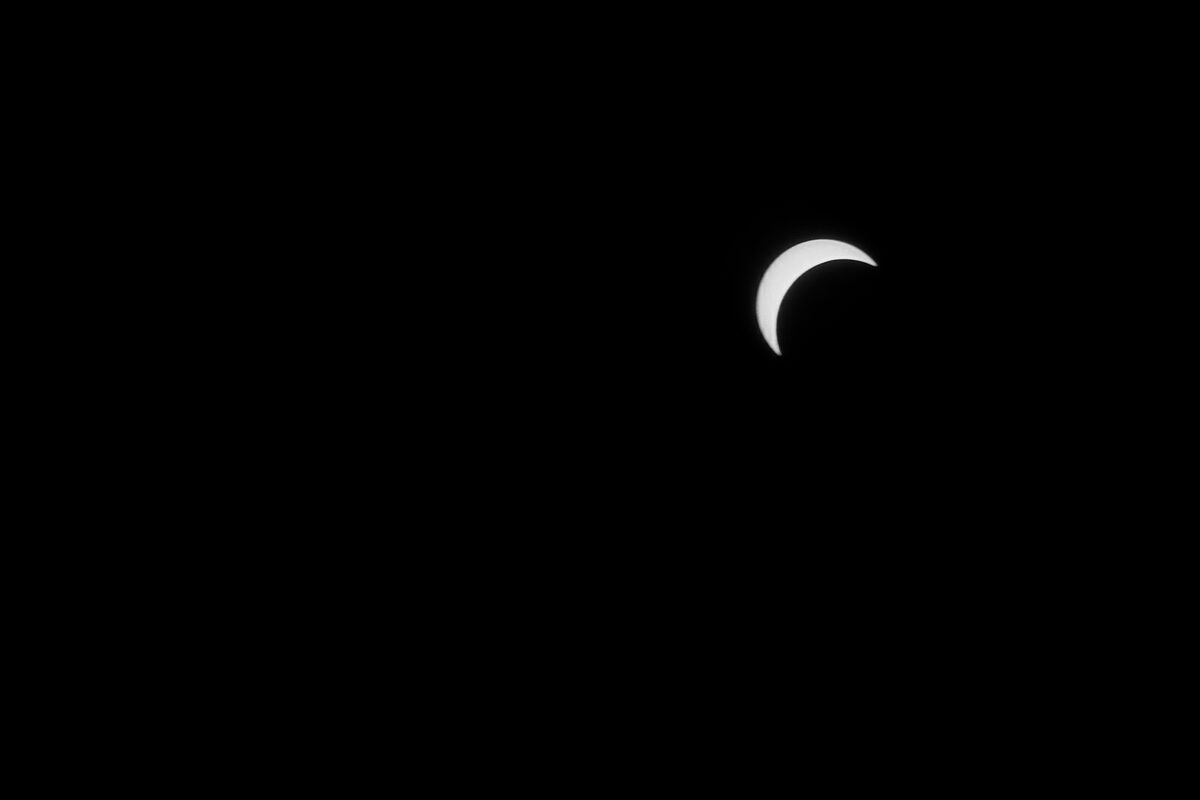
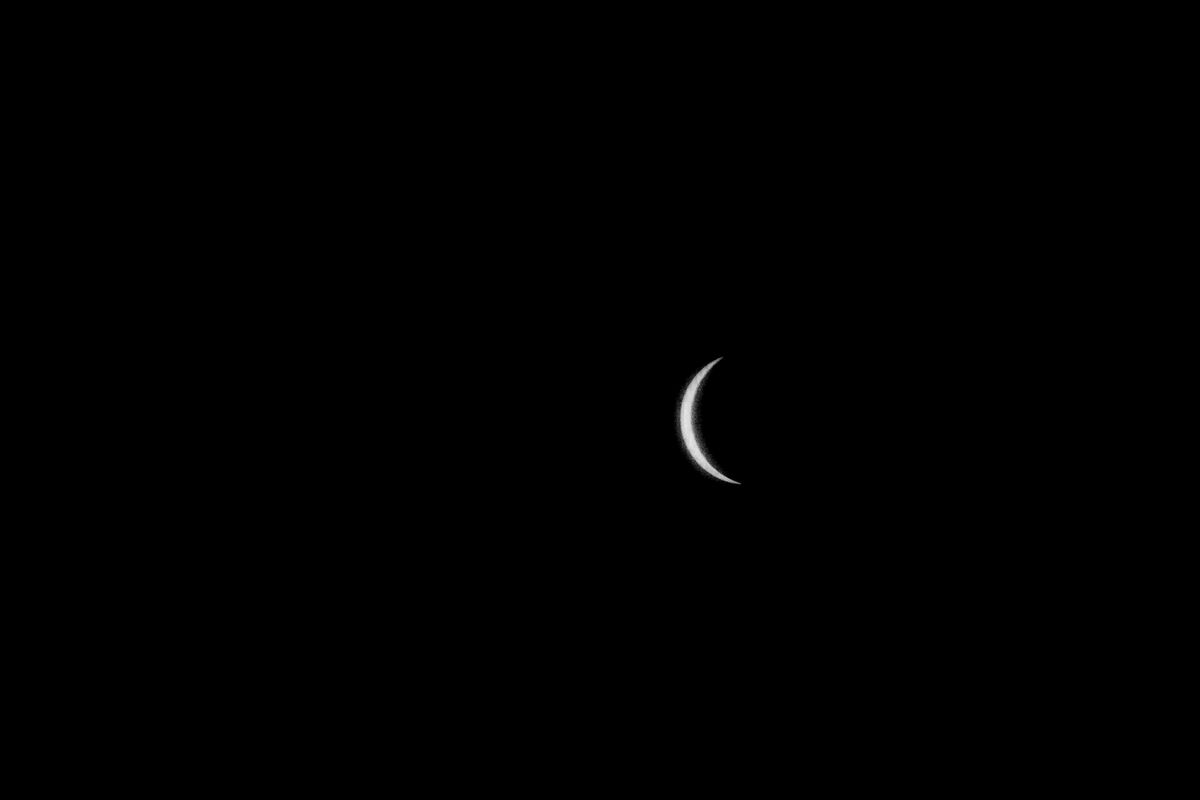
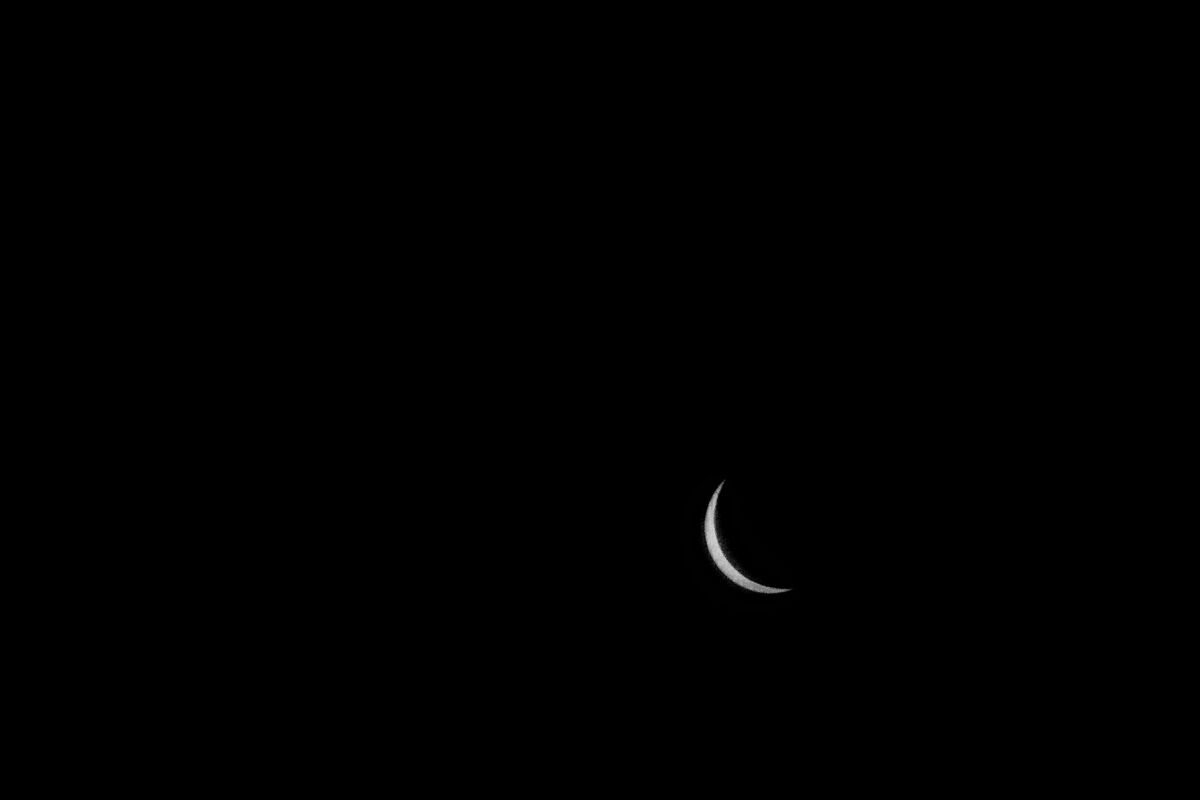
Apr 11, 2024 08:10:26 #
Sidwalkastronomy
Loc: New Jersey Shore
brentrh wrote:
I too would never photograph an eclipse. Takes skill and proper equipment to capture the splendor of a solar eclipse.
This is what got for the 2017 eclipse in Nebraska. Took 10 photos at different exposures every 5 minutes with a tracking telescope. Totality phots as fast as the camera would buffer
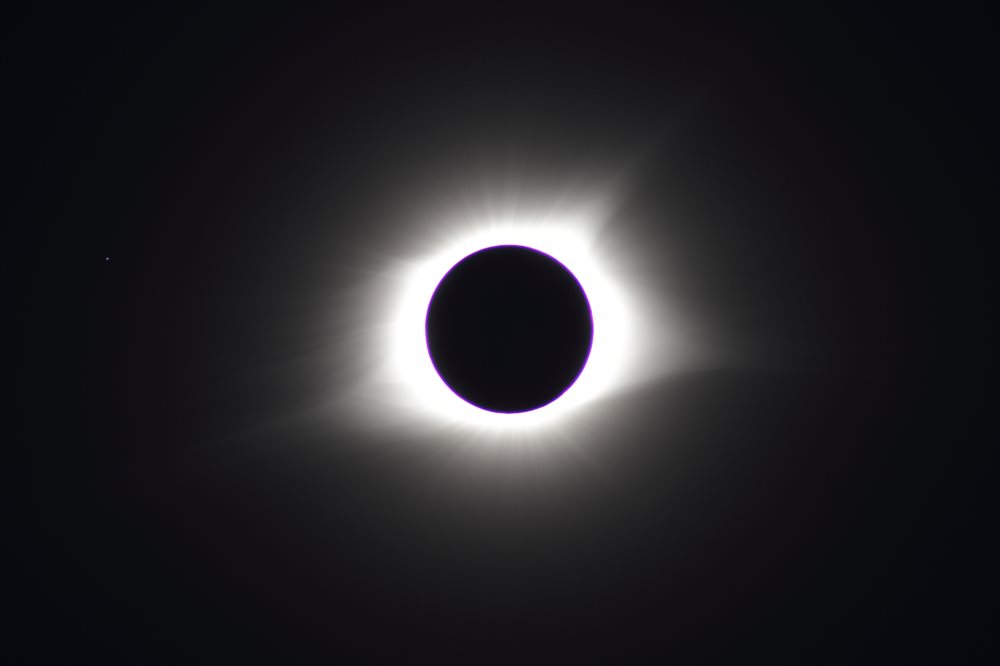
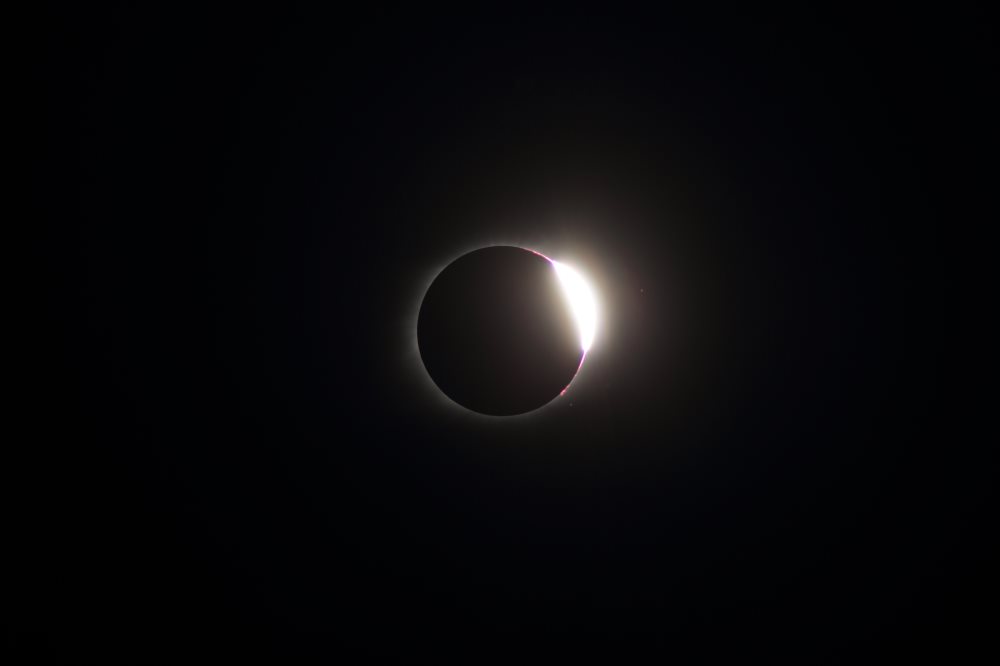
Apr 11, 2024 16:58:23 #
I agree, over exposed.
Central North Carolina here. I think we were in the 80% coverage range. I would never use a good camera to try and capture an eclipse. I shot this with my cell phone inside my welding helmet. I pinched in quite a bit so the resolution is pretty poor.
Central North Carolina here. I think we were in the 80% coverage range. I would never use a good camera to try and capture an eclipse. I shot this with my cell phone inside my welding helmet. I pinched in quite a bit so the resolution is pretty poor.
Apr 12, 2024 09:35:31 #
brentrh wrote:
I too would never photograph an eclipse. Takes skill and proper equipment to capture the splendor of a solar eclipse.
That was my thinking exactly. I drove to where I could watch the eclipse but I was afraid of damaging my camera so the only pictures I took were of the crowd gathering for the event.
I'm wondering whether the problem the Op describes is due to bad focus. The upper limit for exposure is often way beyond the true focus at infinity.
Apr 12, 2024 14:20:13 #
PhilS wrote:
I am wondering if anyone can explain what happened... (show quote)
Looks to be badly overexposed and out of focus.
bwa
Apr 14, 2024 14:28:14 #
Thank you for the comments and suggestions. In answer to some of them:
- Both cameras had Star Guy solar filters (from B&H).
- Both were removed during totality.
- Both were set to manual focus at infinity. It was difficult to fine-tune infinity due to the amount of ambient light before the eclipse. (I was doing this with Live View - perhaps I should have looked through the viewfinder instead.)
Exposure was the same for both cameras. I agree about the over-exposure. What is really odd is that the one camera never showed any hint of the moon taking a chunk out the sun - and just on the one camera.
I used the same setup for the 2017 eclipse in South Carolina and had no problem. Still puzzled.
- Both cameras had Star Guy solar filters (from B&H).
- Both were removed during totality.
- Both were set to manual focus at infinity. It was difficult to fine-tune infinity due to the amount of ambient light before the eclipse. (I was doing this with Live View - perhaps I should have looked through the viewfinder instead.)
Exposure was the same for both cameras. I agree about the over-exposure. What is really odd is that the one camera never showed any hint of the moon taking a chunk out the sun - and just on the one camera.
I used the same setup for the 2017 eclipse in South Carolina and had no problem. Still puzzled.
Apr 14, 2024 16:24:13 #
Apr 14, 2024 16:25:19 #
InfiniteISO wrote:
I agree, over exposed.
Central North Carolina here. I think we were in the 80% coverage range. I would never use a good camera to try and capture an eclipse. I shot this with my cell phone inside my welding helmet. I pinched in quite a bit so the resolution is pretty poor.
Central North Carolina here. I think we were in the 80% coverage range. I would never use a good camera to try and capture an eclipse. I shot this with my cell phone inside my welding helmet. I pinched in quite a bit so the resolution is pretty poor.
My D850 and 80-40mm has 2 eclipses notched in it.
Not sure what the concern would be.
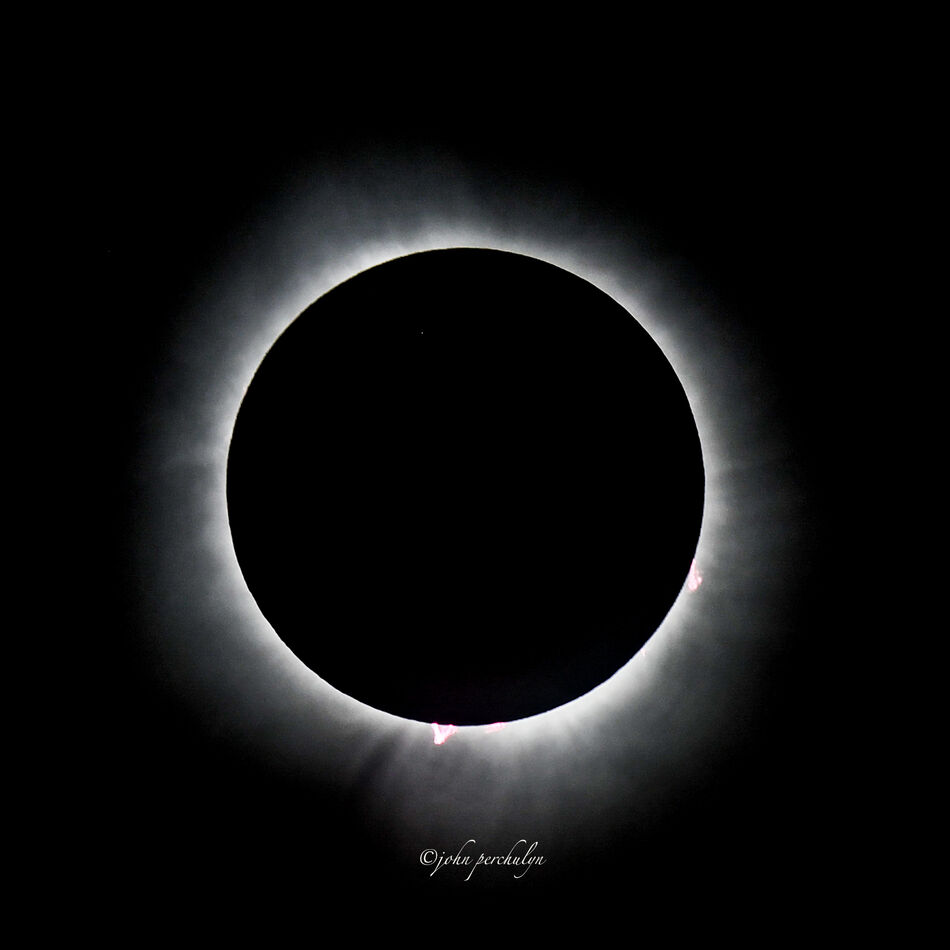
Apr 18, 2024 11:55:35 #
24Megapixseal
Loc: Kansas
Agreed, zero concern using my only cameras....once a legit solar filter of 16.5 stop or more is installed, it's perfectly fine to point a multi-thousand dollar camera at the sun all day long....and I even survived with my eyesight after using the viewfinder to look thru and focus the camera....(This is my 5th end of the world that I've survived!...lol)...if it's safe enough for my sensor, it's safe enough for my eyes
I used a K&F ND100000, worked perfectly as advertised!
The settings the OP used were way overexposing, in my experienced opinion.... And no need to wait until an eclipse to practice... I got my filter a month before the eclipse and simply used it on the first sunny day, at 1:40 pm, to duplicate the sun's altitude, to practice...
I used 1/800th, f11, ISO 100 as a starting point, and used my single point auto focus on the edge of the sun, looking thru the viewfinder, once the camera locked focus, I simply turned the auto focus off (switched to MF)... And snapped several photos and second or two apart.... removed camera from tripod, went inside, looked at the photos on the back of the camera, and was surprised to see everything I expected to see: sharp edges on the disk, sunspots in great detail (for a 300mm lens on a cropped sensor), and even the texture of the suns surface... Replaced the camera on the tripod, changed the shutter speed up and down from 1/800th, went back inside, slower ss overexposed, faster ss the disc looked too dark....so I was lucky with my initial guess
Preceding the eclipse day, I took photos on any day that the SOHO website showed a decent amount of sunspots... There was zero doubt in my mind that I could capture all photos of the eclipse pre and post totality... And I did, every one in perfect focus, with the couple of sunspots that were there the day of the eclipse, with a D3500 and a non-VR 70-300mm kit lens on a tripod
After reading much about the totally different exposure setting for the totality, I simply guessed and had to make small adjustments, settling on F/6.3 300.0mm 1/80s ISO-100 for totality.... And F/6.3 300mm 1/1600s ISO -100 for Diamond Ring and Bailey's Beads.... All of totality was handheld using a 70-300 VR lens on a D5600, using single point auto focus, focusing on the outer ring... Camera grabbed auto focus every time.
Another note I would suggest, I to NEVER, EVER simply rotate the lens to "infinity" and expect it to be in focus.... Some lens are, many are not... Use your autofocus, pre focus, then switch lens or camera to Manual Focus and don't touch the focus ring
I used a K&F ND100000, worked perfectly as advertised!
The settings the OP used were way overexposing, in my experienced opinion.... And no need to wait until an eclipse to practice... I got my filter a month before the eclipse and simply used it on the first sunny day, at 1:40 pm, to duplicate the sun's altitude, to practice...
I used 1/800th, f11, ISO 100 as a starting point, and used my single point auto focus on the edge of the sun, looking thru the viewfinder, once the camera locked focus, I simply turned the auto focus off (switched to MF)... And snapped several photos and second or two apart.... removed camera from tripod, went inside, looked at the photos on the back of the camera, and was surprised to see everything I expected to see: sharp edges on the disk, sunspots in great detail (for a 300mm lens on a cropped sensor), and even the texture of the suns surface... Replaced the camera on the tripod, changed the shutter speed up and down from 1/800th, went back inside, slower ss overexposed, faster ss the disc looked too dark....so I was lucky with my initial guess
Preceding the eclipse day, I took photos on any day that the SOHO website showed a decent amount of sunspots... There was zero doubt in my mind that I could capture all photos of the eclipse pre and post totality... And I did, every one in perfect focus, with the couple of sunspots that were there the day of the eclipse, with a D3500 and a non-VR 70-300mm kit lens on a tripod
After reading much about the totally different exposure setting for the totality, I simply guessed and had to make small adjustments, settling on F/6.3 300.0mm 1/80s ISO-100 for totality.... And F/6.3 300mm 1/1600s ISO -100 for Diamond Ring and Bailey's Beads.... All of totality was handheld using a 70-300 VR lens on a D5600, using single point auto focus, focusing on the outer ring... Camera grabbed auto focus every time.
Another note I would suggest, I to NEVER, EVER simply rotate the lens to "infinity" and expect it to be in focus.... Some lens are, many are not... Use your autofocus, pre focus, then switch lens or camera to Manual Focus and don't touch the focus ring
Apr 19, 2024 01:06:40 #
Apr 23, 2024 09:38:04 #
PhilS wrote:
I am wondering if anyone can explain what happened... (show quote)
I agree with the comments you have received. I live in North Texas DFW area so I was right in the middle of the totality path and shot around 200 images, half RAW and half JPEG. Used two cameras, Nikon D300S and bridge Panasonic FZ300. I made my own filters with a sheet of solar filter from an astronomy store. I am not skilled at this and did little prepping except a few sun shots to test the filters and such. I set both cameras to Auto mode, auto ISO, Spot metering. Most came out very nice except when I powered off/on and refocused. Used a 80-400mm Nikon lens on D300, and the Lumix zooks out to 600mm. Both were close to or full zoom. Same set up for the annular eclipse we had this last summer. I had camera on tripods but they are not high quality and basically I held steady as possible with my hands. Again, after reading all the information about how to do this and that I said what tha heck. Just do what works for me. I may post some images, have been asked to not sure yet.
Well that's my two cents of cheap-ass photoing the eclipses. I hope you get another chance.
Bruce.
If you want to reply, then register here. Registration is free and your account is created instantly, so you can post right away.
